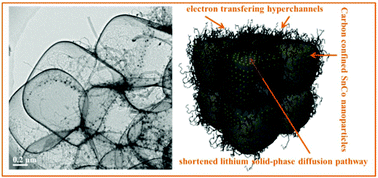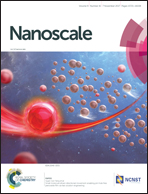One-step synthesis of SnCo nanoconfined in hierarchical carbon nanostructures for lithium ion battery anode†
Abstract
A new strategy for the one-step synthesis of a 0D SnCo nanoparticles-1D carbon nanotubes-3D hollow carbon submicrocube cluster (denoted as SnCo@CNT-3DC) hierarchical nanostructured material was developed via a simple chemical vapor deposition (CVD) process with the assistance of a water-soluble salt (NaCl). The adopted NaCl not only acted as a cubic template for inducing the formation of the 3D hollow carbon submicrocube cluster but also provides a substrate for the SnCo catalysts impregnation and CNT growth, ultimately leading to the successful construction of the unique 0D-1D-3D structured SnCo@CNT-3DC during the CVD of C2H2. When utilized as a lithium-ion battery anode, the SnCo@CNT-3DC composite electrode demonstrated an excellent rate performance and cycling stability for Li-ion storage. Specifically, an impressive reversible capacity of 826 mA h g−1 after 100 cycles at 0.1 A g−1 and a high rate capacity of 278 mA h g−1 even after 1000 cycles at 5 A g−1 were achieved. This remarkable electrochemical performance could be ascribed to the unique hierarchical nanostructure of SnCo@CNT-3DC, which guarantees a deep permeation of electrolytes and a shortened lithium salt diffusion pathway in the solid phase as well as numerous hyperchannels for electron transfer.



 Please wait while we load your content...
Please wait while we load your content...